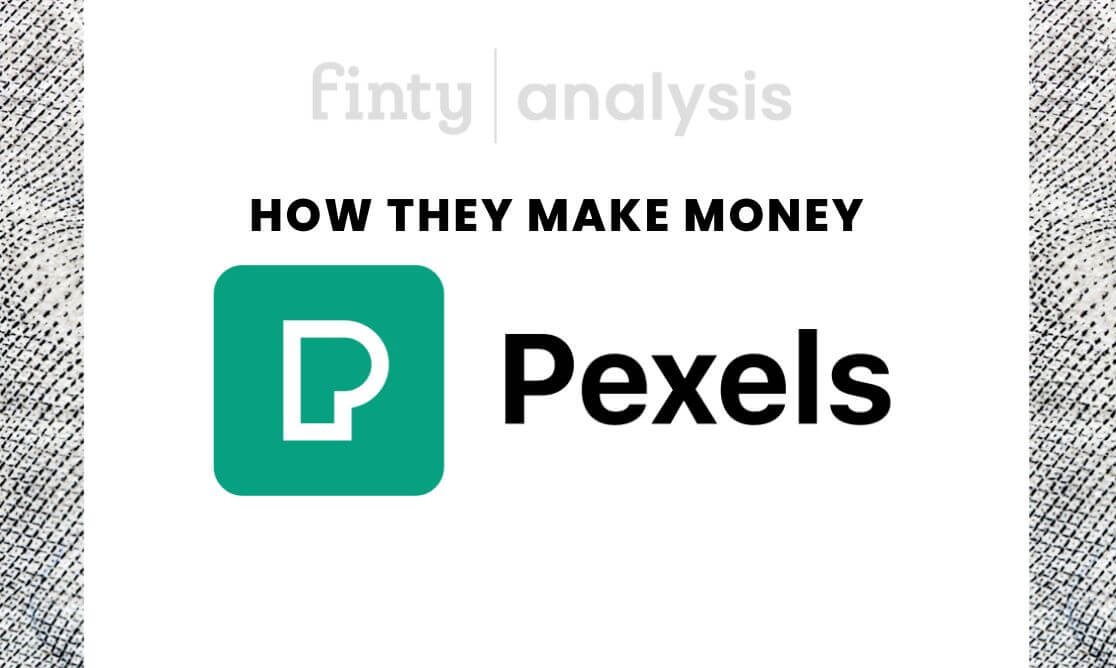How can a platform like Pexels — where a smorgasbord of free, high-quality stock images and videos are available for free — possibly make money? You aren't the only one to have asked.
Scroll for our in-depth analysis of the business model that has allowed Pexels to revolutionize the world of stock photography, thrive without compromising on user experience, and continue to pay those server bills.

Coming up next
What does Pexels do?
Pexels is a free stock photo and video platform for content creators, businesses, and anyone else needing high-end imagery.
Founded in 2014 by German twin brothers, Pexels quickly gained popularity due to its impressive selection of appealing content available at no cost to users. At the time, this was highly disruptive.
Canva acquired Pexels in 2018 for an undisclosed amount.
How does Pexels work?
Pexels operates as a digital library of visual content. Photographers and videographers can contribute their work to the platform where it is made available to users worldwide.
Not everything submitted gets featured. Pexels curates the submitted content, ensuring a diverse collection while maintaining high image and video quality standards.
End users can access and download the content for personal and commercial use without restrictions, making it appealing to a broad audience in the growing creator economy.
Integrations with collaborative design tools like Canva enhance the user experience, making Pexels an even more attractive choice against the competition.
None of this comes cheap, though. The cost of storage and bandwidth to run an operation like this is eye-watering. So, how can they pay the bills when the product is free?
How Pexels makes money
Pexels makes money primarily through advertising, sponsorships, and referral fees.
Advertising sponsorships
Pexels incorporates advertising and sponsored content into its front-end in an unobtrusive way. These advertisements and sponsored visuals are carefully curated to maintain the overall user experience and ensure relevance to the target audience.
By partnering with brands and advertisers, Pexels can diversify its revenue sources and stick to its primary mission of providing free stock photos intact. The fact that its user base is comprised of early adopters, creators, and influencers means it can charge a premium to advertisers looking to tap into an extremely influential audience.
Referral fees
Pexels has established partnerships with design software makers like Canva. Pexels earns referral fees through these collaborations when users leverage its tools and services, contributing to the company's overall revenue.
Future growth engine
The potential for Pexels to generate revenue on a standalone basis outside Canva — which charges its users for access to the Pexels library — is promising, driven by several factors that can further solidify its position as a leading platform for free stock photos. That being said, it's unlikely Canva will change much, given its valuation and trajectory.
Expanding the content library
Pexels can continue to grow its content library by attracting more photographers and content creators to contribute their work.
If Pexels can foster an engaged community and incentivize photographers to share their images, it can improve the overall user experience and retention.
Monetizing premium features
Introducing a premium-level paid subscription plan, perhaps called "Pexels Plus," and giving subscribers access to exclusive features and benefits would bring it closer in line with competitors and open a new source of revenue.
Such a paid plan could offer advanced editing tools, templates, access to premium content libraries, integrations with more third-party services, and more.
Adopting generative AI
Pexels can explore the use of generative AI to create unique and original visual content. By training AI models on existing images in the Pexels library, the platform can generate new images that meet specific criteria or artistic styles. This approach can expand the collection rapidly, providing users with fresh and diverse visuals.
Generative AI can also be incorporated into advanced image enhancement and editing tools to automatically adjust lighting, color grading, or remove unwanted objects from images.
API access
Pexels also offers an API, which allows third-party developers to access and use the platform's content for their applications and services.
This could be monetized in return for more favorable rate limits and access to additional services.
Partnerships and integrations
Forming strategic partnerships with leading design software, content management systems, and social media platforms can fuel Pexels' growth in the future as it has in the past.
Integrating Pexels directly into popular tools and platforms can streamline the workflow for designers, bloggers, and marketers, making it even more convenient to access and utilize Pexels' vast image library — and reduce churn.
Competitors
Some of Pexels' most notable competitors include:
- Unsplash. A leading free stock image service offering a vast library of high-quality photos for personal and commercial use.
- Pixabay. A popular platform for sharing and downloading free images, videos, and illustrations, catering to diverse content needs.
- Shutterstock. A well-established stock image and video platform that offers users access to a massive library of content through a subscription-based model.
- Getty Images. A renowned premium visual content provider known for its extensive collection of high-quality images, videos, and music.

